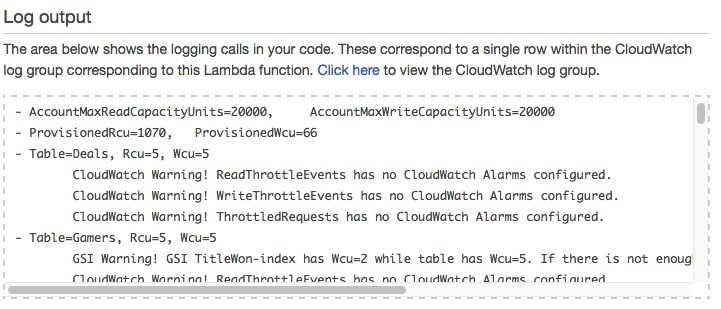AWS Database Blog
Tag: DynamoDB
How SGK simplified the data structure of a highly dynamic workload by migrating from an RDBMS to Amazon DynamoDB
Many database solutions are available today, and choosing the right one for your use case can be difficult. Recently, NoSQL databases have been widely adopted for real-time web applications. Amazon DynamoDB is an example of a NoSQL database that is optimized to yield significant flexibility and performance benefits over a traditional relational database management system […]
How to create a fast and globally available user profiling system by using Amazon DynamoDB global tables
A user profiling system is a system that stores users’ names, IDs, contact information, past behaviors, interests, and other information. Such a system also provides methods to query that user information. In this post, I explain the importance of a globalized user profiling system, how to create this system using Amazon DynamoDB global tables, and […]
Z-order indexing for multifaceted queries in Amazon DynamoDB: Part 2
In a previous AWS Database Blog post, I introduced Z-order indexing, a way in which you can sort your data to efficiently query an Amazon DynamoDB table by using range bounds on multiple attributes. In this post, we explore the process of creating a schema for your index. We look at how to decide which […]
A serverless solution to monitor the storage of your Amazon DynamoDB tables
If you use Amazon DynamoDB as your application’s NoSQL database service, you might want to track how much storage your DynamoDB tables are using. DynamoDB publishes its service metrics to Amazon CloudWatch. CloudWatch helps you monitor and analyze those metrics, set alarms, and react automatically to changes in your AWS resources. Currently, DynamoDB sends many […]
How to perform advanced analytics and build visualizations of your Amazon DynamoDB data by using Amazon Athena
You can reap huge analytical value from billions of items and millions of requests per second in your Amazon DynamoDB service. However, you need to export your data in order to get that analytical value. Copying the data from a DynamoDB table to an analytics platform allows you to extract rich insights. In order to […]
Use Amazon DynamoDB Accelerator (DAX) from AWS Lambda to increase performance while reducing costs
April 01, 2020 update: Changed the security to add a least privileged IAM policy to the role instead of a wide open managed policy, switched to HttpApi in API Gateway for auto-deployment as well as cost, and added to node.js code to detect if a requesting client is base64 encoding the body of the request and […]
How to use AWS CloudFormation to configure auto scaling for Amazon DynamoDB tables and indexes
A best practice for the deployment of AWS resources is to use a configuration system that treats your infrastructure as code. Infrastructure as code is a key enabler of DevOps practices, which bring developers and operations together to collaborate on automating application delivery at scale. By modeling your entire infrastructure as code in AWS CloudFormation […]
Top 20 most visited Amazon DynamoDB Developer Guide pages so far in 2018
The Amazon DynamoDB Developer Guide provides an overview of concepts and detailed instructions for using the various features of Amazon DynamoDB. The following list contains the 20 most visited pages in the guide during the first two months of 2018. We’ve included a brief description with each link to explain what each page covers. Use […]
How to automate the auditing of operational best practices for your AWS account
With a microservices architecture, distributed teams often need a central operational excellence team to make sure that the rest of the organization is following operational best practices. For example, you might want to know if you configured lifecycle policy, versioning, and access policies properly for objects in an Amazon S3 bucket. Proper configurations ensure that […]
AWS re:Invent 2017 Roundup: All Amazon DynamoDB-Related Sessions for Your On-Demand Viewing
Though AWS re:Invent 2017 concluded two months ago, we still wanted to round up and share all the excellent Amazon DynamoDB session content from the conference. The following table includes the titles of DynamoDB-related sessions and links to the session recordings, session descriptions, and an explanation of whom each session is best for. AWS re:Invent […]









